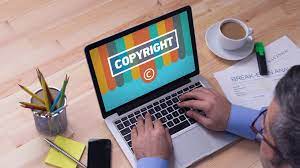
As the eLearning industry continues to flourish, content creators are increasingly concerned about protecting their work from theft and unauthorized use. Copyright is a legal tool that helps to safeguard the original works of authorship including written, dramatic, artistic, and certain other intellectual works. For those creating eLearning content, here are several strategies to keep copyright on your material:
1. Understand the Basics of Copyright Law:
Educate yourself about what copyright is and how it can protect your eLearning content. Knowing the scope and limitations of copyright law is crucial. Copyright automatically protects original works once they are created and fixed in any tangible medium of expression.
2. Register Your Copyright:
For additional protection, you can register your copyright with the appropriate government body. In the United States, this would be the U.S. Copyright Office. While not required, registration provides a public record of your copyright and is necessary if you wish to bring a lawsuit for infringement in federal court.
3. Include Copyright Notices:
Use copyright notices on your eLearning materials to inform users that the content is protected by law. A copyright notice typically includes the copyright symbol (©), the year of first publication, and the name of the copyright owner.
4. Use Terms of Use Agreements:
When you distribute your eLearning courses, make sure users agree to a Terms of Use agreement which outlines how they can and cannot use your content.
5. Apply Digital Rights Management (DRM):
DRM systems prevent unauthorized redistribution of digital media and restrict ways consumers can copy content they’ve purchased.
6. Implement Technical Protection Measures:
This includes strategies like password protecting files, using secure hosting platforms, or other encryption methods to prevent unauthorized access to your content.
7. Educate Your Users:
Make sure that your learners know about the legal implications of copyright infringement. Education can often deter piracy by increasing awareness about creators’ rights.
8. Monitor the Use of Your Content:
Use tools to monitor where and how your content is being used online. If you find places where your eLearning material has been used without permission, you can take action.
9. Enforce Your Rights:
If someone infringes on your copyright, you have the right to enforce it through cease-and-desist letters, takedowns notices under DMCA provisions if you are in the USA, or eventually through legal action as a last resort.
By following these steps, eLearning content creators can better protect their valuable work from unauthorized use and maintain control over their intellectual property rights in their educational material.

